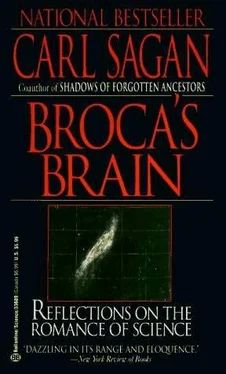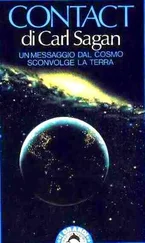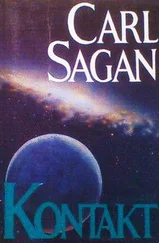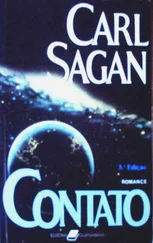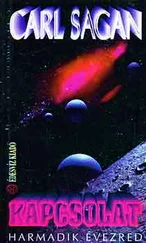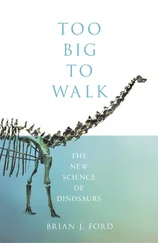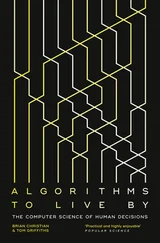Carl Sagan - Broca's Brain - The Romance of Science
Здесь есть возможность читать онлайн «Carl Sagan - Broca's Brain - The Romance of Science» весь текст электронной книги совершенно бесплатно (целиком полную версию без сокращений). В некоторых случаях можно слушать аудио, скачать через торрент в формате fb2 и присутствует краткое содержание. Жанр: Физика, на английском языке. Описание произведения, (предисловие) а так же отзывы посетителей доступны на портале библиотеки ЛибКат.
- Название:Broca's Brain: The Romance of Science
- Автор:
- Жанр:
- Год:неизвестен
- ISBN:нет данных
- Рейтинг книги:3 / 5. Голосов: 1
-
Избранное:Добавить в избранное
- Отзывы:
-
Ваша оценка:
- 60
- 1
- 2
- 3
- 4
- 5
Broca's Brain: The Romance of Science: краткое содержание, описание и аннотация
Предлагаем к чтению аннотацию, описание, краткое содержание или предисловие (зависит от того, что написал сам автор книги «Broca's Brain: The Romance of Science»). Если вы не нашли необходимую информацию о книге — напишите в комментариях, мы постараемся отыскать её.
Broca's Brain: The Romance of Science — читать онлайн бесплатно полную книгу (весь текст) целиком
Ниже представлен текст книги, разбитый по страницам. Система сохранения места последней прочитанной страницы, позволяет с удобством читать онлайн бесплатно книгу «Broca's Brain: The Romance of Science», без необходимости каждый раз заново искать на чём Вы остановились. Поставьте закладку, и сможете в любой момент перейти на страницу, на которой закончили чтение.
Интервал:
Закладка:
We have been restricted to the electromagnetic radiation reflected and emitted by astronomical objects. We have not been able to examine pieces of stars or planets [15]in our laboratories or to fly into such objects to examine them in situ. Ground-based passive observations have restricted us to a narrow fraction of the conceivable data on astronomical objects. Our position has been much worse than that of the fabled six blind men in pursuit of the nature of the elephant. It has been more like one blind man in a zoo. We were standing there for centuries stroking a left hind foot. It is not surprising that we did not deduce tusks, or notice that the foot did not belong to an elephant at all. If, by accident, the orbital plane of the double star was in our line of sight, we would see eclipses; otherwise not. We could not move to a position in space from which the eclipses could be observed. If we were observing a galaxy when a supernova was exploding, we could examine the supernova spectrum; otherwise not. We do not have the ability to perform experiments on supernova explosions-which is just as well. We could not examine in the laboratory the electrical, thermal, mineralogical and organic chemical properties of the lunar surface. We were restricted to inferences from the visible light reflected and the infrared and radio waves emitted by the moon, aided by occasional natural experiments such as eclipses and lunations.
But all that is gradually changing. Ground-based astronomers have, at least for nearby objects, an experimental tool: radar astronomy. At our convenience, at our choice of frequency, polarization, bandpass and pulse length, we can irradiate a nearby moon or planet with microwaves and examine the returned signal. We can wait for the object to rotate underneath the beam and illuminate some other place on its surface. Radar astronomy has delivered a host of new conclusions on the rotation periods of Venus and Mercury, and related problems in the tidal evolution of the solar system, on the craters of Venus, the fragmented surface of the Moon, the elevations of Mars, and the size and composition of the particles in the rings of Saturn. And radar astronomy is just beginning. We are still restricted to low altitudes, and for the outer solar system, to sun-facing hemispheres. But with the newly resurfaced Arecibo telescope of the National Astronomy and Ionosphere Center in Puerto Rico, we will be able to map the surface of Venus to a resolution of 1 kilometer-better than the best ground-based photographic resolution of the lunar surface-and obtain a host of new information on the asteroids, the Galilean satellites of Jupiter and the rings of Saturn. For the first time we are poking around in cosmic stuff, electromagnetically fingering the solar system.
A much more powerful technique of experimental (as opposed to observational) astronomy is spacecraft exploration. We can now travel into the magneto-spheres and atmospheres of the planets. We can land on and rove over their surfaces. We can collect material directly from the interplanetary medium. Our first preliminary steps into space have shown us a wide range of phenomena we never knew existed: the Van Allen trapped-particle belts of the earth; the mass concentrations beneath the circular maria of the moon; the sinuous channels and great volcanoes of Mars; the cratered surfaces of Phobos and Deimos. But what I am most struck by is that, before the advent of space vehicles, astronomers did very well-hamstrung though they were. The interpretations of the observations available to them were remarkably good. Space vehicles are ways of checking out the conclusions drawn inferentially by astronomers, a method of determining whether astronomical deductions on very distant objects-objects so far away as to be entirely inaccessible by space vehicles in the near future-should be believed.
ONE OF THE EARLIEST major debates in astronomy was on whether the Earth or the Sun was at the center of the solar system. The Ptolemaic and Copernican views explain the apparent motion of the Moon and planets to comparable precision. For the practical problem of predicting the positions of the Moon and planets as seen from the surface of the Earth, it hardly mattered which hypothesis was adopted. But the philosophical implications of the geocentric and heliocentric hypotheses were quite different. And there were ways of finding out which was right. In the Copernican view, Venus and Mercury should go through phases like the Moon. In the Ptolemaic view, they should not. When Galileo, using one of the first astronomical telescopes, observed a crescent Venus, he knew he had vindicated the Copernican hypothesis.
But space vehicles provide a more immediate test. According to Ptolemy, the planets are affixed to immense crystalline spheres. But when Mariner 2 or Pioneer 10 penetrated the locales of Ptolemy’s supposed crystal spheres, no impediment to their motion was detected; and, more directly, the acoustic and other micrometeorite detectors heard not even the faintest whisper of tinkling, much less the sound of smashed crystal. There is something very satisfying and immediate about this sort of test. There are probably no Ptolemaists in our midst. But there might be some with lingering doubts about whether Venus could not be made to go through phases in some modified geocentric hypothesis. Those people can now rest easy.
Before space vehicles, the German astrophysicist Ludwig Biermann was intrigued by the observations of the apparent acceleration of bright knots in the well-developed tails of comets passing through the inner solar system. Biermann showed that the radiation pressure of sunlight was inadequate to account for the observed acceleration and made the novel suggestion that there were charged particles streaming out from the Sun which, in interaction with the comet, produced the observed acceleration. Well, maybe. But could it not be equally due to, say, chemical explosions in the nucleus of the comet? Or some other explanation? But the first successful interplanetary spacecraft, Mariner 2, in the course of its fly-by of Venus, determined the existence of a solar wind with velocities and electron densities in just the range that Biermann had calculated would be necessary to accelerate his knots.
In the same period there was a debate on the nature of the solar wind. In one view, that of Eugene Parker of the University of Chicago, it was caused by hydro-dynamical flow out from the Sun; in another view, by evaporation from the top of the solar atmosphere. In the hydrodynamic explanation there should be no fractionation by mass; that is, the atomic composition of the solar wind should be the same as that of the Sun. But in the evaporation hypothesis, the lighter atoms escape the Sun’s gravity more easily, and heavy elements should be preferentially depleted in the solar wind. Interplanetary spacecraft have found that the ratio of hydrogen to helium in the solar wind is precisely that in the Sun, and have thereby provided convincing support for the hydrodynamic hypothesis of the origin of the solar wind.
In these examples from solar wind physics, we find that the spacecraft experiments provided the means for making critical judgments among competing hypotheses. In retrospect, we find that there were astronomers such as Biermann and Parker who were right for the right reasons. But there were others, equally bright, who disbelieved them and might have gone on disbelieving them had not the critical spacecraft experiments been performed. What is remarkable is not that there were alternative hypotheses which we now see to be incorrect, but rather that on the basis of the very meager data available anyone was smart enough to divine the correct answer-inferentially, using intuition, physics and common sense.
Before the Apollo missions, the uppermost layer of the lunar surface could be examined by visible, infrared and radio observations during both lunations and eclipses, and the polarization of sunlight reflected off the lunar surface had been measured. From these observations, Thomas Gold of Cornell University prepared a dark powder which, in the laboratory, reproduced the observed properties of the lunar surface very well. This “Golddust” can even be purchased for a modest price from the Edmund Scientific Company. A naked-eye comparison of lunar dust returned by Apollo astronauts with Golddust shows them to be almost indistinguishable. In particle-size distribution, and in electrical and thermal properties, they are a very close match. However, their chemical compositions are very different. Golddust is primarily Portland cement, charcoal and hairspray. The moon has a less exotic composition. But the observed lunar properties available to Gold before Apollo did not strongly depend on the chemical composition of the lunar surface. He was able to deduce very well that fraction of the lunar-surface properties which was relevant to pre-1969 observations of the Moon.
Читать дальшеИнтервал:
Закладка:
Похожие книги на «Broca's Brain: The Romance of Science»
Представляем Вашему вниманию похожие книги на «Broca's Brain: The Romance of Science» списком для выбора. Мы отобрали схожую по названию и смыслу литературу в надежде предоставить читателям больше вариантов отыскать новые, интересные, ещё непрочитанные произведения.
Обсуждение, отзывы о книге «Broca's Brain: The Romance of Science» и просто собственные мнения читателей. Оставьте ваши комментарии, напишите, что Вы думаете о произведении, его смысле или главных героях. Укажите что конкретно понравилось, а что нет, и почему Вы так считаете.
